Choosing the wrong UPS size means wasted money or inadequate protection for your valuable equipment. Imagine critical systems failing simply because the UPS was too small! Let's ensure you get the perfect fit.
To determine the right UPS size, calculate the total wattage of all devices you'll connect. Then, select a UPS with a Watt rating at least 20-25% higher than your calculated load. This provides headroom and accommodates future needs.
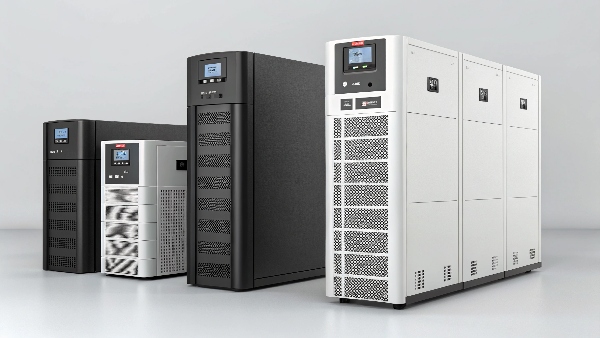
It's a question I hear all the time, whether I'm talking to a procurement manager for a large hospital infrastructure company or someone setting up a home office. Getting the UPS size right is absolutely fundamental. It's not just about having some backup power; it’s about having the right amount of reliable power when you need it most. As an OEM/ODM manufacturer with 10 years in this field, we've seen firsthand how crucial correct sizing is. Let's break down how you can figure this out for your specific needs and explore some other common questions about using these essential devices.
Does a UPS use a lot of electricity?
Worried your new UPS will send your electricity bill through the roof? This fear might stop you from getting crucial power protection for your electronics, but is it justified?
A UPS itself consumes a very small amount of electricity to keep its battery charged and internal circuits active. This is minimal compared to the devices it protects. The main energy use comes from recharging the battery after an outage.
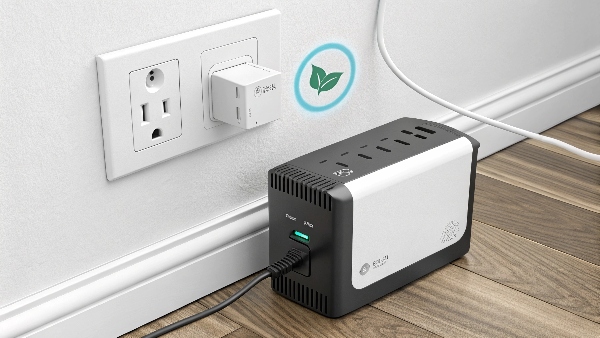
This is a common concern, and a valid one! Nobody wants to add a significant drain to their electricity bill. The good news is that a UPS, when it's just standing by, doesn't use much power. Most of the time, it's simply passing through the utility power to your connected devices while keeping its battery topped up. This "trickle charge1" for the battery and the power for its own monitoring circuits consume a very small amount of energy, often just a few watts for typical home or office-sized units. As a manufacturer, we focus on creating energy-efficient designs, some even featuring patented technology to minimize this standby consumption2.
The type of UPS can have a slight impact:
- Standby/Offline UPS: These are generally the most energy-efficient during normal operation as they mostly pass mains power directly.
- Line-Interactive UPS: These might use slightly more due to the Automatic Voltage Regulation (AVR) circuitry, but the AVR can save battery life by handling minor fluctuations without switching to battery.
- Online (Double-Conversion) UPS: These inherently use a bit more energy because they are constantly converting AC to DC and then back to AC. However, they provide the highest level of protection, which is why our clients in critical sectors like data centers and healthcare facilities specify them, understanding the energy trade-off for complete power isolation.
The most significant energy consumption by a UPS occurs when it's recharging its battery after a power outage. This is temporary. For most users, the annual cost of running a UPS is quite low, far outweighed by the cost of data loss or equipment damage it prevents.
| UPS Type | Typical Standby Power Draw (Idle) | Notes |
|---|---|---|
| Standby/Offline | 2-8 Watts | Most efficient in normal mode |
| Line-Interactive | 5-15 Watts | AVR circuitry adds slightly to consumption |
| Online | 15-50+ Watts (depending on size) | Constantly regenerating power |
Why is my UPS beeping continuously?
That constant, annoying beeping from your UPS is definitely trying to tell you something important! Ignoring it could mean your battery is failing or there's a serious operational issue with the unit.
Continuous beeping from a UPS usually signals a critical issue. This often indicates a completely depleted battery, an overload condition (too much equipment plugged in), an internal fault within the UPS, or that it's running on battery power and the battery is now critically low.
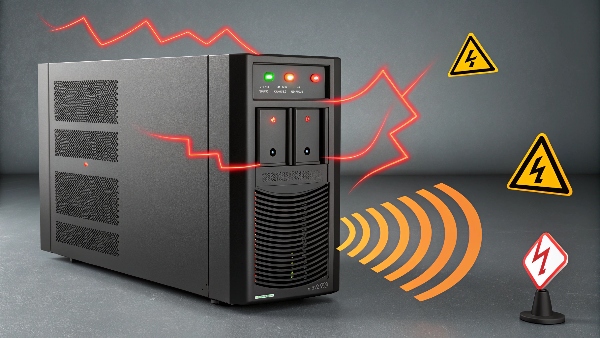
A UPS communicates its status through beeps and indicator lights. A continuous beep is almost always a sign that it needs immediate attention. While specific beep codes can vary between manufacturers (always check your user manual!), here are some common interpretations:
- On Battery Power: Usually, this is an intermittent beep (e.g., one beep every 5-10 seconds) to let you know it's doing its job. This isn't continuous unless the next state is reached.
- Low Battery Warning: As the battery depletes while on battery power, the beeping often becomes more frequent and rapid (e.g., a beep every second). If it becomes a continuous tone, it might mean the battery is almost completely exhausted and shutdown is imminent.
- Overload Condition: If you've connected devices that draw more power (Watts) than the UPS is designed to handle, it will often emit a solid, continuous beep and may even shut down to protect itself. You'll need to unplug some equipment. I once had a client connect a laser printer to a small desktop UPS, and the continuous beep immediately told them something was wrong – laser printers have a high power surge on startup!
- Battery Fault / Replace Battery: Many UPS units will have a specific beep pattern or a continuous tone, often accompanied by a flashing "replace battery" light, to indicate the battery has failed its self-test or is no longer holding a charge. Batteries, especially standard lead-acid types, typically last 3-5 years. We offer both lead-acid and advanced lithium battery UPS solutions, the latter having a longer lifespan.
- Internal UPS Fault: Less commonly, a continuous beep can signal a problem with the UPS unit itself.
If your UPS is beeping continuously, first check if the power is out. If not, check for an overload condition by unplugging recently added devices. Look at the indicator lights. If it's a battery issue, you'll likely need a replacement. For our procurement manager clients, ensuring their on-site teams can understand these basic alerts is key to maintaining system uptime. Our company provides comprehensive documentation and support to help.
How to properly use a UPS?
You've invested in a UPS, which is great! But are you using it correctly to maximize its lifespan and the protection it offers? Improper use can reduce its effectiveness or even damage it.
Properly use a UPS by connecting only critical equipment to its battery-backed outlets. Avoid overloading it. Allow it an initial full charge before use. Regularly test it, and plan to replace the battery every 3-5 years or when indicated by the unit.
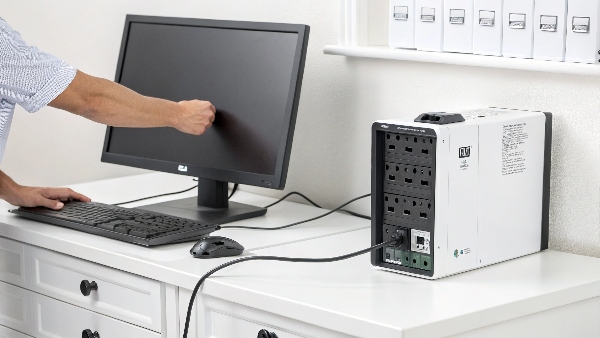
As a manufacturer, I want to see our clients get the most out of their UPS systems. Here’s a checklist for proper usage:
- Initial Charge: When you first get your UPS, plug it in and let it charge fully before connecting your equipment. This usually takes 8-12 hours. This conditions the battery.
- Know Your Outlets: Most UPS units have two types of outlets:
- Battery Backup + Surge Protection: For your critical devices that need to stay on during an outage (e.g., computer, monitor, modem, router, external hard drives). In a hospital setting, this would be critical diagnostic or monitoring equipment.
- Surge Protection Only: For less critical peripherals that don't need battery backup but still need surge protection (e.g., printers, scanners, speakers). Important: Never plug a laser printer into a battery-backed outlet unless the UPS is specifically rated for such high-draw devices. The startup surge can overload most consumer-grade UPSs.
- Don't Overload: Calculate the total wattage of the devices you're connecting to the battery-backed outlets. Ensure this is well within the UPS's rated Watt capacity (aim for no more than 75-80% of its capacity to be safe).
- Placement Matters: Keep the UPS in a cool, dry, well-ventilated area. Avoid direct sunlight, heat sources, and areas with excessive dust or moisture.
- Regular Self-Tests (if available): Many modern UPS units have a self-test function. Run this periodically (e.g., monthly or quarterly). Some units do this automatically.
- Manual Test: Occasionally (e.g., every 6 months), simulate a power outage by unplugging the UPS from the wall (with non-critical test load connected) to ensure it switches to battery and provides power. Don't do this for too long if your data isn't saved!
- Battery Replacement: Understand that batteries are consumables. Lead-acid batteries typically last 3-5 years. Our lithium battery UPS options offer a longer service life. Replace the battery when the UPS indicates it's needed or when runtime significantly decreases.
- No Daisy-Chaining: Never plug a UPS into another UPS. Also, avoid plugging power strips or other surge protectors into the battery-backed outlets of your UPS. You can usually plug a power strip into a surge-only outlet if you need more outlets, but be mindful not to overload that circuit.
For system integrators and larger enterprises, we often provide detailed deployment guidelines and training to ensure our UPS systems are integrated correctly for optimal performance and longevity.
Should I turn off my UPS when not in use?
You might wonder if you can save a little power by turning off your UPS when your computer or other equipment is off. But will this compromise its readiness when you need it most?
Generally, you should leave your UPS on at all times. This ensures its battery remains fully charged and it can provide instant protection during unexpected power outages or even minor power fluctuations. Turning it off defeats its primary purpose of providing uninterruptible power.
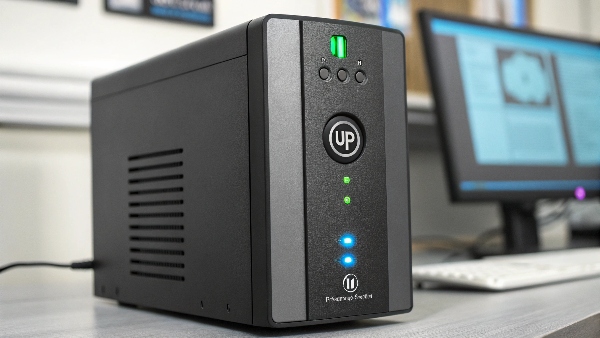
The "U" in UPS stands for Uninterruptible. Its core job is to be ready, instantly, when the power goes out. If you turn it off, it can't do that. Here's why keeping it on is usually the best practice:
- Battery Charging and Maintenance: The UPS needs to be on to keep its internal battery charged and healthy. A fully charged battery is critical for providing the expected runtime during an outage.
- Instantaneous Protection: Power problems aren't always complete blackouts. Sags, surges, and brownouts can happen at any time, even when your main equipment is "off" but still plugged in. A line-interactive or online UPS, when on, continues to provide power conditioning and protection against these issues.
- Minimal Standby Power Consumption: As we discussed earlier, the power a UPS consumes while in standby mode is very small. The cost of this electricity is negligible compared to the potential cost of data loss, hardware damage, or downtime. I’ve seen too many cases where someone turned off their UPS to "save power," only for a storm to cause a surge that damaged their unprotected (because the UPS was off) equipment.
- Readiness for "Phantom Loads" or Scheduled Tasks: Even if your computer is off, your modem, router, or a NAS might still be active or have scheduled tasks. They need continuous protection.
Are there any exceptions?
- Very Extended Absences: If you're going to be away for many weeks or months and all connected equipment will also be completely powered down and unplugged, you could turn off and unplug the UPS to prevent any chance of it depleting its battery during a prolonged outage in your absence. However, remember it will need a full recharge cycle when you return.
- Maintenance/Battery Replacement: For safety, you must turn off and unplug the UPS before performing any maintenance like replacing a battery.
- Storage: If you're storing a UPS long-term, it’s typically recommended to charge it fully, then you might turn it off. Some manufacturers advise disconnecting the internal battery for very long storage, and periodic recharging (every 3-6 months) is often suggested.
For our clients managing critical infrastructure, like banks or data centers using our patented UPS technology, their systems are designed for 24/7/365 operation and are never turned off except for scheduled, controlled maintenance. This philosophy of constant readiness is good practice even for home users.
Conclusion
Sizing your UPS correctly and using it properly are key to reliable power protection. Different scenarios need different UPS solutions. If you have specific needs or complex environments, seeking expert advice ensures you get the best configuration.

